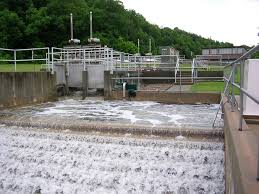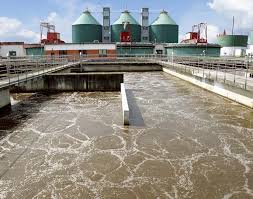The tourism industry has a responsibility to save water wherever feasible as the availability of water becomes an issue that is becoming more and more urgent in many regions of the world.
Additionally, having access to clean and safe water will be a key factor in choosing a location for a tourism business or guaranteeing the continued success of existing operations. Additionally, it is increasingly understood that a tourism destination’s future success depends on how it manages its wastewater.
Large amounts of wastewater are produced by guest rooms, kitchens, restaurants, laundries, and gardens, which can lead to sickness and have a detrimental ecological impact.
Hotels, guesthouses, restaurants, and golf courses must act quickly to improve wastewater management, safeguard the environment, and satisfy a rising demand from customers for environmentally friendly services.
This section of the manual looks at technical and managerial alternatives that offer a variety of long-term benefits to tourism facilities and their destinations, particularly cost savings, increased operational efficiency, an improved reputation, and increased customer happiness.
Since wastewater management and treatment operations are frequently very technical, it takes professional skills to choose the best technological solution based on effectiveness, costs, impacts, etc.
The decision-makers who are involved in creating a comprehensive strategy for water management and wastewater treatment are the target audience for this portion of the guidebook.
Read Also : Hazardous Waste Disposal Near Me
Many operational measures can be implemented without technical aid, even if expert counsel will be needed when choosing the overall systems.
The Need for Water and Wastewater Management Practice
The ecology, public health, and the economic well-being of a location may all suffer if wastewater is discharged before it has been properly treated. It is possible to quantify the financial, health, and ecological costs of these adverse effects.
The following are list of negative effects of inadequate wastewater treatment:
(1) Health Effects
Diarrhea, shellfish poisoning, and other illnesses are caused by pathogenic bacteria, viruses, and toxic algae. According to studies, eating contaminated shellfish causes hepatitis, liver damage, and in some cases even death.
Bathing in polluted water causes gastroenteritis and upper respiratory illnesses. In developing a wastewater management strategy, it is important to take into account the prevalence of illnesses and deaths brought on by ingesting or coming into touch with contaminated water.
(2) Water resources and groundwater are affected
The quality of a region’s groundwater and water resources can be directly impacted by improper wastewater disposal, and because of the fluidity of these resources’ motions, toxins may disperse far from the source of the initial contamination.

Because of inadequate or insufficient treatment systems, fecal matter is frequently found in surface waters in underdeveloped nations. Since fecal bacteria can induce diarrhea and dysentery, the health effects of fecal contamination of surface and groundwater sources on locals and visitors are grave.
(3) Having an effect on mountain ecosystems
The ecosystems in mountains and mountainous areas are frail and fragile, and they can only tolerate a certain amount of human activity. These facilities infrequently have efficient wastewater treatment systems. Poorly handled wastewater can seriously harm mountain ecosystems and result in:
▪ Loss of flora and fauna
▪ Erosion on mountain slopes.
▪ Loss of breeding grounds for a species due to eutrophication of mountain streams
▪ Freshwater fish species in a diversity.
▪ Water supplies that are fresh being contaminated by feces.
(4) Tourism Revenue Lost
The ability of a place to draw tourists depends on how pure its surroundings are. Tourists tend to avoid areas with filthy water and unhygienic conditions, which affects locals’ ability to make a living and tourism-related businesses, which therefore lose a significant revenue stream.
Wastewater management, which is defined as the collection, treatment, and reuse of wastewater, is a crucial strategy for safeguarding water resources. Unwanted performance can result in a variety of issues in the wastewater collection network, one of the most crucial infrastructures.
Predicting variables in wastewater treatment plants is crucial since wastewater treatment is a process that depends on a variety of physical and chemical difficulties. Urban treated wastewater, on the other hand, is a suitable resource for distribution to different applications like agriculture and industry, but it has its limitations.
Inappropriate use of these resources can have negative effects on the environment and human health, as well as cause social unrest and occasionally financial difficulties. The right techniques to risk-based modeling as well as prediction tools are needed to manage many components of wastewater, including those previously mentioned.
The procedures utilized to handle and get rid of the sewage sludge generated during sewage treatment are referred to as sewage sludge treatment. The goal of sludge treatment is to lessen the weight and volume of sludge in order to lower transportation and disposal expenses as well as any potential health issues associated with disposal methods.
Solid waste from liquid sewage is partially removed to create sludge, which is primarily water. Solids that settle during initial treatment are removed in primary clarifiers, resulting in primary sludge.
In operations using inorganic oxidizing agents or secondary treatment bioreactors, sludge separated in secondary clarifiers is referred to as secondary sludge. Due to the liquid line’s tanks’ inability to hold enough sludge, intensive sewage treatment operations produce a constant amount of sludge that must be evacuated from the liquid line.
The amount of sludge produced and a comparison of treatment costs for various disposal alternatives will determine which sludge treatment method is best. While restricted land availability may favor aerobic digestion and mechanical dewatering for cities, air-drying and composting may appeal to rural populations, while economies of scale may favour energy recovery alternatives in metropolitan regions.
Industrial wastewater treatment refers to the procedures used to treat wastewater produced as an unwanted byproduct by industries. After treatment, the industrial wastewater (or effluent) may be recycled, released into a sanitary sewer, or dumped into a body of water.
Wastewater produced by some industrial facilities can be treated in sewage treatment plants. The majority of industrial processes, including chemical and petrochemical plants, refineries, and chemical and petroleum plants, have their own specialized facilities to treat their wastewaters so that the pollutant concentrations in the treated wastewater comply with the rules regarding disposal of wastewaters into sewers or into rivers, lakes, or oceans.
Read Also : Industrial Wastewater Treatment Process
Environmental and public health protection is the main goal of wastewater treatment systems. Before wastewater can be disposed of or utilized again safely, potential contaminants must be removed from it. Technically, zero wastewater output is achievable, but it is highly expensive. Following the completion of the treatment procedures, the majority of the wastewater still needs to be disposed of.
In conclusion, the final effluent can then be disposed of in a subsurface soil disposal field. A variety of treatment systems can be used, but the most common one consists of a septic tank for partial treatment. Recirculating granular media filters can be used in place of conventional disposal fields when there is a lack of available land.

